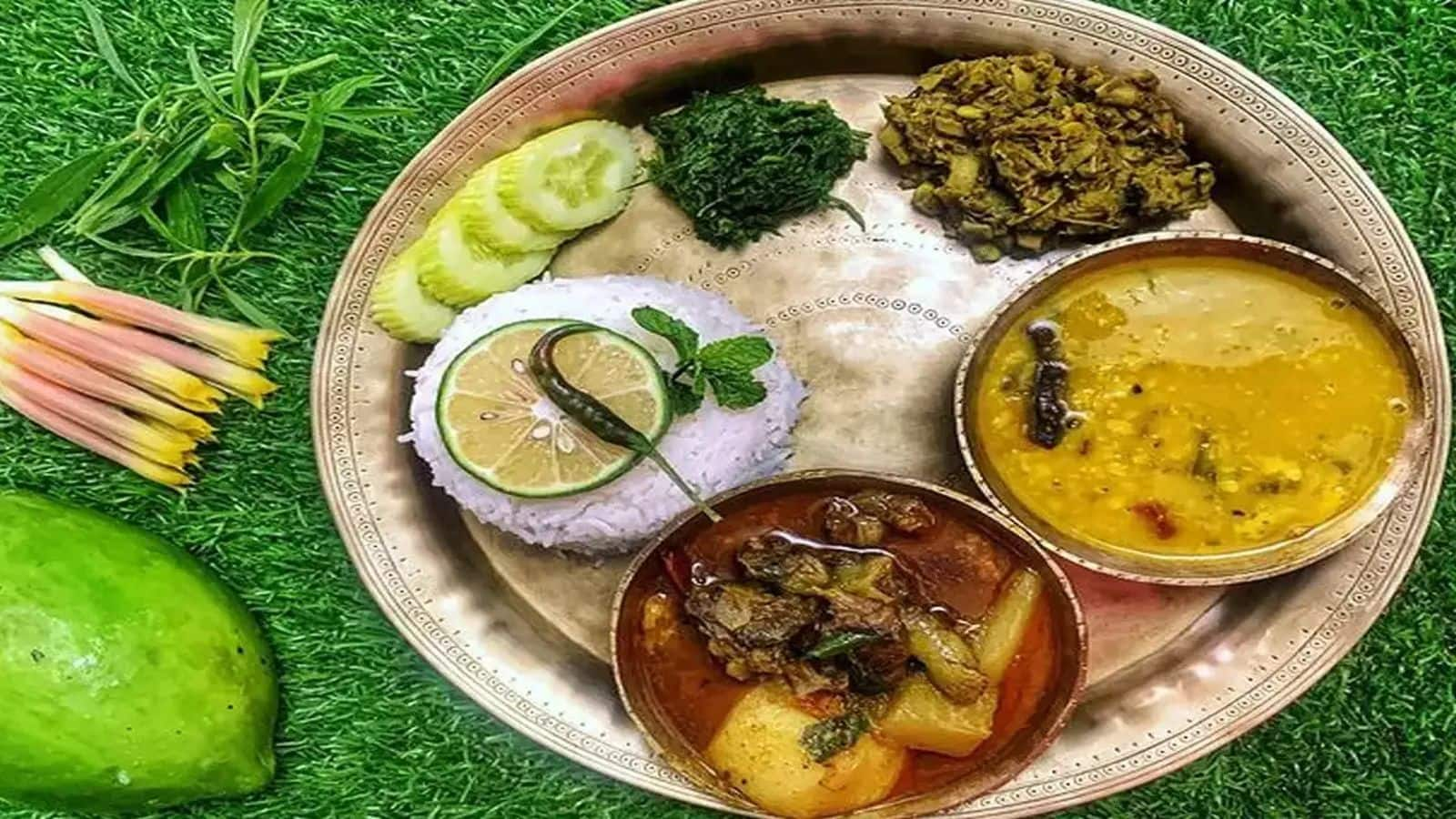
Flavors of Bihu: Foods to enjoy during this Assamese festival
What's the story
Bihu stands at the core of Assamese culture, heralding the Assamese New Year with a bounty of distinct flavors and culinary delights. Celebrated with fervor, it's a time when food transcends mere taste to embody tradition. Local ingredients come alive through simple, yet profound cooking methods, offering a glimpse into the rich cultural tapestry of the region through its festive fare.
Dish 1
Pitha: The staple sweet treat
Pitha is a type of rice cake that's synonymous with Bihu celebrations. Made from rice flour and sometimes stuffed with sweet fillings like jaggery or coconut, these cakes can be fried or baked. Til Pitha, filled with sesame seeds and jaggery, is particularly popular. It's not just a delicacy; it's a labor of love that brings families together during the festive season.
Dish 2
Tangy tamarind khar
Khar is an Assamese curry base that uses raw papaya and the key ingredient kola khar, which is made from burnt banana peels. It has a distinctive alkaline flavor and is believed to cleanse the stomach. During Bihu, this dish takes on a tangy twist with the addition of tamarind, making it both refreshing and digestive-friendly.
Dish 3
Masor tenga curry
A signature dish in Assam during Bihu would be masor tenga, an appetizing curry known for its sour taste typically derived from tomatoes or lemon. However, keeping our guidelines in mind, we'll focus on how this dish emphasizes local herbs and spices to bring out unique flavors that are light on the palate yet rich in nutrition.
Ingredient 1
Joha rice
Joha rice, a fragrant short-grain variety from Assam, is a staple during Bihu. Its subtle scent is a delight, particularly when steamed to complement other dishes. For dessert, it's transformed into a luscious payasam, enriching the festive spread. More than its aroma, Joha rice is also valued for its nutritional content, making it a wholesome choice for any meal during these celebrations.
Ingredient 2
Exotic herbs and greens galore
In Assam, Bihu celebrations showcase the use of unique local herbs such as manimuni (Centella asiatica) and dhekia (fern). These are lightly sauteed with garlic and a mix of spices, a method that preserves their nutritional benefits while enhancing their inherent flavors. This culinary practice highlights the Assamese tradition of valuing simplicity alongside the rich taste profiles of its native greens.